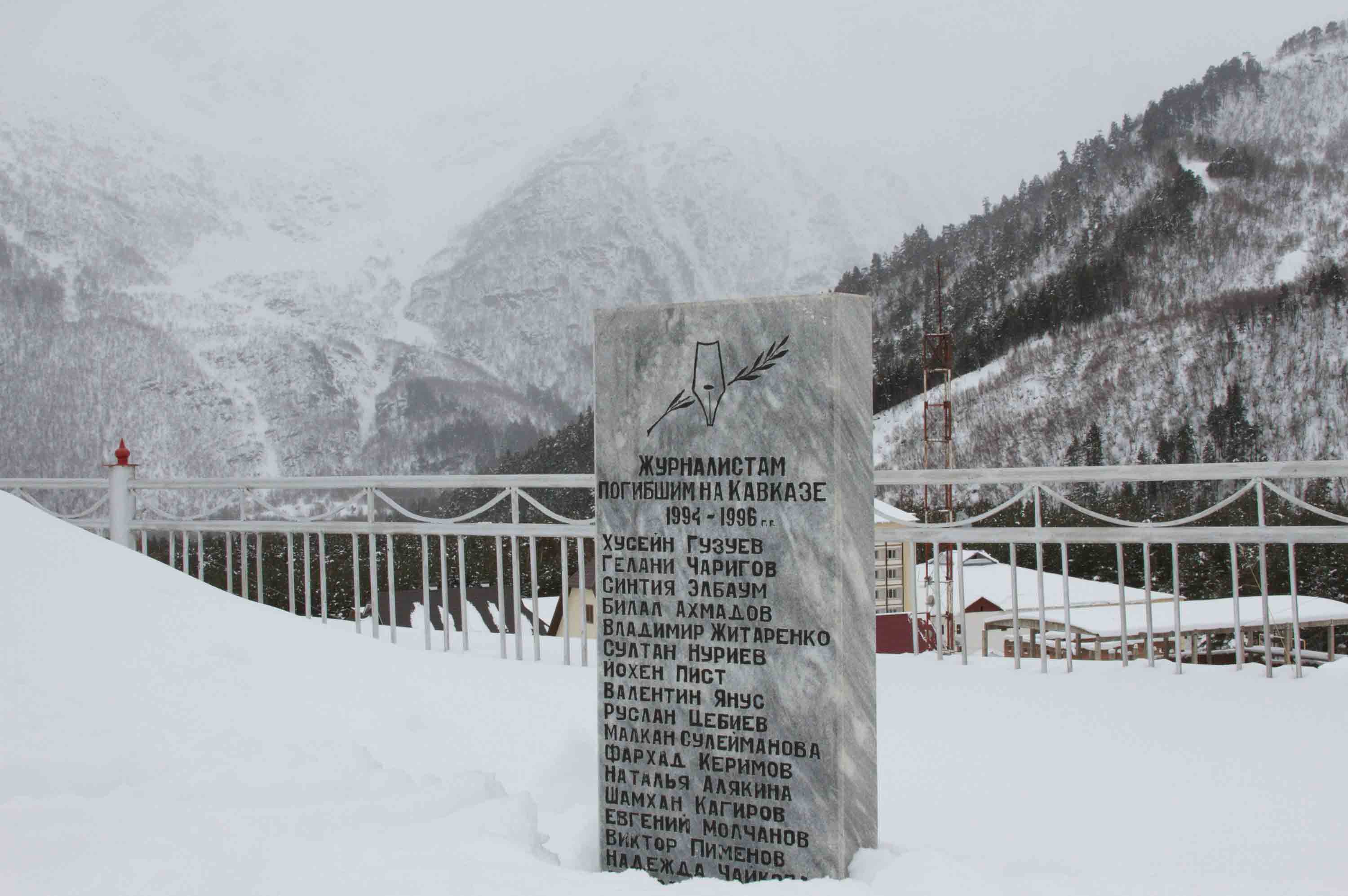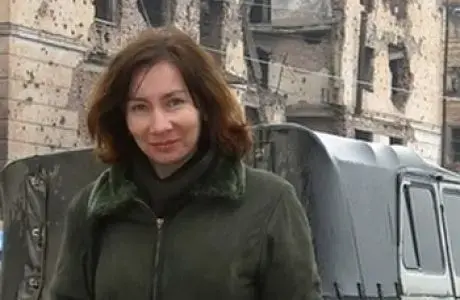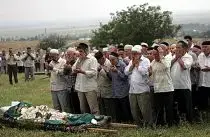This is the first post in a series of reports from her project published in advance of her upcoming feature story in the fall issue of the Nieman Reports.
Extremely brave is the first characteristic you hear when interviewing people who had known Natalia Estemirova as a colleague, friend, journalist and human rights advocate.
Many called her Natasha - it's a soft version of her first name. She was a soft and quiet person, very feminine. She never raised her voice. Even when speaking of violence and crimes her voice remained calm and very soft. She had an easy rapport with strangers, listening to what others had to say rather than speaking herself.
Some called her Natalia Khusainovna, the name she used when she was still a teacher of history. Zurab Markhiev, another journalist in this project and formerly one of Natasha's students, told me that back in the early 90's, as a teacher in Chechyna's Grozny School No. 7, she was different from other teachers: "She was supposed to teach us Marxism-Leninism according to our text books," Markhiev recalled. "Instead she taught us global politics, the true history of the Caucasus and resistance against colonization. She had a very sharp sense of justice".
There are others who counted this fragile woman as an enemy. The young president of Chechnya Ramzan Kadyrov (never elected but appointed by Vladimir Putin) publicly called her a "woman with no morality" because she had dared to disobey the roles and orders he established for the people of Chechnya.
Most of the media in Russia passively reported Kadyrov's claims of positive change, modernization, and the rebuilding of peace and economy in Chechnya. Natasha told a different story. She was the one who reported on the medieval beheading of the president's personal enemy, and how the victim's head was then displayed on a stake in the center of his own village as a terrifying lesson for anyone who might ever consider standing against Kadyrov's will. She was also the one who reported on the president's secret personal prisons where people had been tortured and murdered.
Natasha was the leading monitor for the human rights NGO Memorial's office in Chechnya. Monitoring cases in Chechnya is not as simple as searching for certain information on the internet. Monitoring is walking from house to house, traveling from village to village, and interviewing victims, most of who are too frightened to talk. It requires negotiating, arguing with authorities, and receiving urgent phone calls day or night and winter or summer. It entails documenting the most dangerous details - the who, when and how of abductions; what was the color, model, and the plate number of the abductors' car; and, in many cases, what was the division of the local or federal secret services that the kidnappers represented. Those details have been crucial for abduction reports to the police and for the hundreds of appeals to the European Court of Human Rights that Natasha helped to complete. Natasha's monitoring also posed a life-threatening risk for herself because it exposed details that helped to identify the so-called 'eskadrony smerti," or death squadrons, that the secret services had never intended to reveal. Natasha's reports were published in Novaya Gazeta, the Russian opposition newspaper that had already lost four reporters at the hands of unknown criminals. Among the victims was Natasha's close friend Anna Politkovskaya, one of Russia's most famous journalists and also a fierce critic of Vladimir Putin's regime.
Natasha and Anna had had a long history of reporting together since the Second Chechen War from all the mountain villages where male reporters feared to go for security reasons, and where these two brave women used to walk sometimes dozens of miles because there was no transportation to be had.
There had been long emotional discussions on many topics between Anna and Natasha. On security precautions for example, Anna categorically refused to wear a headscarf and long skirt while Natasha argued that in the places they had to go they couldn't show up uncovered without the risk of immediately being kidnapped or attacked. They had long discussions on theoretical topics too, among them journalism and ethics. For Anna the high purpose of journalism was to report timely and accurately all the information you have discovered with no reference to the personal consequences of your reporting. For Natasha journalism was more about advocacy. She used to argue that it was better to keep information unreported if the report might endanger someone's life and that responsibility for your sources is one of the main values of journalism. They never agreed.
Anna was gunned down in Moscow on October 7, 2006 (Vladimir Putin's birthday). Her body was found with bullets in her head and chest.
Natasha was kidnapped in Grozny three years later, on July 15th, 2009 at a bus station on the way from her home to the office. Natasha behaved that day as she had taught others to behave in case of kidnapping: She shouted out her name and that she was being kidnapped, and she begged onlookers to call and report this to Memorial. She was taken from a street full of people during the morning rush hour. No one helped her; no one reported. People were too scared. They didn't want to be known as witnesses. Natasha's body was found that same afternoon in neighboring Ingushetia with bullets in her head and chest. Her 16 year-old daughter said: "I know what Mom was thinking when they took her. She was happy that it was her, not me."
Russia declined to give the United Nations access to the investigation of Natasha's assassination.
One year after Natasha's murder the authorities in Russia announced that the crime was solved. A rebel killed in the fall of 2009 was identified as the murderer. The only evidence mentioned in the militia's report was a picture of Natasha supposedly found among his belongings. A few days later the militia added new information to the first report claiming that the weapon of murder also was found among the rebel's belongings.
Novaya Gazeta decided to reduce its reporting on the North Caucasus to secure its journalists. Memorial announced the possible closure of its office in Chechnya for security reasons.
Milana Bakhieva, a close friend of Natasha's and her colleague in Memorial, spent six months in the United States under the special protection program. At the end of July 2010, Milana returned to Chechnya to continue monitoring the situation.








